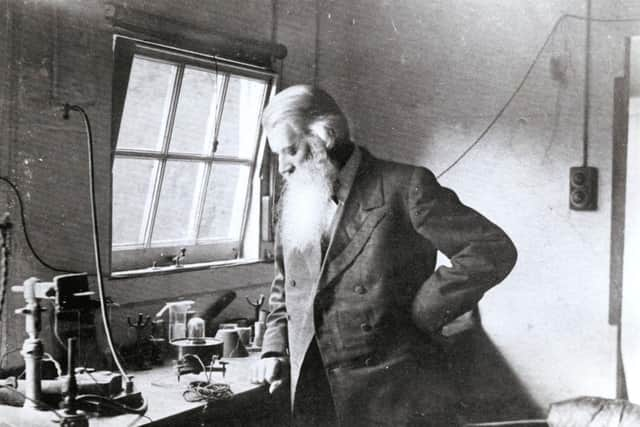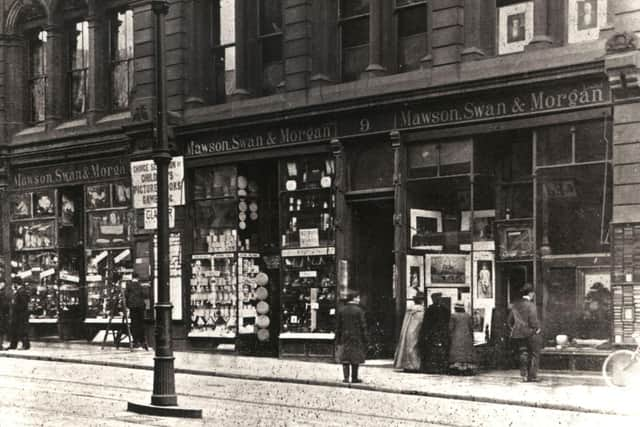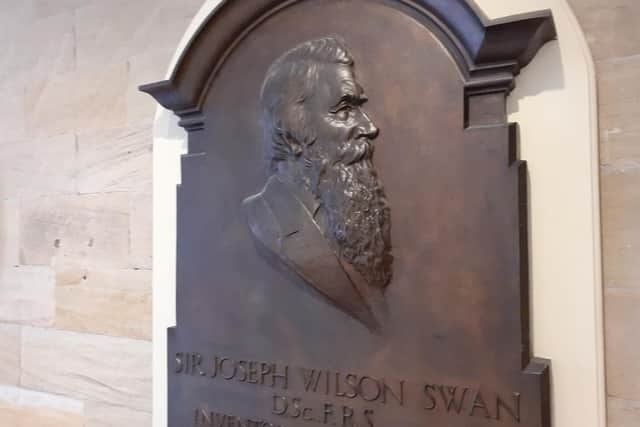The story of Joseph Swan - the Sunderland genius who invented the light bulb, and battled the American Thomas Edison for the credit
and live on Freeview channel 276
Humble-ish beginnings
Joseph Wilson Swan was born on October 31, 1828 in a grand house called Pallion Hall, which stood roughly where Pallion Metro station is found today. His family later moved to Olive Street.
His parents were John and Isabella Swan (née Cameron). The Swans were better off than most. John ran a successful ironmongers in the centre of Sunderland. But they were by no means rich. There were eight little Swans, so a large home and a decent income were quite necessary.


Advertisement
Hide AdAdvertisement
Hide AdCrucially, John’s income meant that the Swan children could attend school at a time when not everyone could afford to. Joseph was most definitely bright (an appropriate adjective), insatiably curious and a voracious reader.
He also attended lectures at the Sunderland Atheneum (this fine building was demolished in 1900 and the site on the corner of Atheneum Street and Fawcett Street is today occupied by Gentoo).
Aged 14 he undertook a six-year apprenticeship with Sunderland pharmacists Hudson and Osbaldiston. Unfortunately, both Mr Hudson and Mr Osbaldiston died before the apprenticeship was completed.
Matters deteriorated to the point where Swan had to move to Newcastle. In 1846 his sister Elizabeth’s husband, John Mawson, offered him a partnership in a pharmaceutical business in Newcastle’s Grey Street which is now a burger bar.


Swan’s contribution to photography
Advertisement
Hide AdAdvertisement
Hide AdMawson recognised that Swan was the brains in the outfit and encouraged his partner’s scientific pursuits. Joseph was fascinated by the latest in photography and began to make collodion, a flammable solution used on photographic plates.
Swan did all the work on the stuff. Yet when it was bottled and sold, the solution was quite unfairly called “Mawson’s Collodion”.
Still, both men were making money. Mawson could have a happy life, on the back of a Mackem’s achievements, as long as he didn’t do anything silly: like get himself killed while supervising the disposal of a quantity of dumped nitroglycerin.


Alas, in 1867, Mawson got himself killed while supervising the disposal of a quantity of dumped nitroglycerin.
Advertisement
Hide AdAdvertisement
Hide AdSwan’s work on the light bulb is widely known. However, he would probably be famous today for his work in photography, were his achievements therein not outshone by his light bulbs.
In 1862, he invented a commercially available procedure for carbon printing in photography. His knowledge of silver bromide emulsions led to him patenting the dry plate in 1871, and bromide photographic paper in 1879.
You’re not reading an academic thesis here, so let’s just say that while photography existed before Joseph Swan, he made it quicker, easier and better.
The light bulb moment and fame
Swan had actually been working on light bulbs since the age of 21, using a carbonised filament inside a glass shell. Although he had the rudiments correct, it would be a while before he would master it.
Advertisement
Hide AdAdvertisement
Hide AdHis light bulb moment came when he made his filaments less flammable and therefore safer, when he removed virtually all of their oxygen (which is highly flammable) by means of a vacuum. Clever or what?
His fame spread because wildfire didn’t. In 1879 satirical magazine Punch published a cartoon in which Mr Punch held a “Swan Lamp” offering “new lamps for old”. In true Punch fashion, it wasn’t funny.
Swan obtained British Patent 4933 on November 27, 1880 and his house in Gateshead was the first in the world to have working light bulbs installed. That is how confident he was in the safety of his invention.
‘Fairy lights’
In 1881 London’s Savoy Theatre became the first building in the world to be lit entirely by electricity. Swan supplied about 1,200 of his “incandescent lamps”. A year later, theatre impresario Richard D’Oyly staged the Gilbert and Sullivan operetta Iolanthe.
Advertisement
Hide AdAdvertisement
Hide AdAt the show’s London premiere fairy characters on stage were festooned in small, battery powered lights created by the Sunderland inventor. Hence the term ‘fairy lights’ has been used ever since.
The brash rival – Thomas Edison
A more famous inventor, Thomas Edison, had also carried out experiments on what we now call the light bulb across the Atlantic in the USA.
In 1883 they formed the Edison and Swan Electric Light Company, which had one of its offices in Sunderland and lasted until 1964. So they must have been pretty good mates. Right?
Not exactly. In 1882 Edison sued Swan, claiming infringement of Edison's US patent of 1879. But Swan provided prior research and publication, so the US Patents Office found against Edison. Ha!
Advertisement
Hide AdAdvertisement
Hide AdBack in Britain, roles were reversed when Swan took Edison to court for infringement. Swan won again. Two-nil. As part of a settlement the court forced Edison to enter a partnership with his Mackem rival. Eventually, the wealthy Edison managed to buy out Swan.
It’s a longer story than that, but in essence the modern light bulb was invented by Swan, building on the work of others before him including Humphrey Davy. Edison perfected it.
Edison was unquestionably a genius, with over a thousand patents to his name (although Swan himself had over 70). But he always wanted one more and had an insouciant attitude when it came to claiming credit.
He might have taken credit for the wheel, had the bible not mentioned them being attached to chariots; and Swan wasn’t the only other scientist he annoyed.
Advertisement
Hide AdAdvertisement
Hide AdNineteen years younger than Swan, highly confident and about as modest as Cassius Clay, Thomas Edison was a tornado of a man. But the genius from Sunderland calmly - and profitably - stood his ground.
Swan the man
Joseph Swan, evidently quite affable and mild-mannered, married a Liverpool woman called Frances White in 1862. They had three children before Frances died in 1868. Their twin sons died soon afterwards.
By 1871 he was married again, this time to Frances’ sister Hannah. The knot was tied in Switzerland as such a union was illegal at the time in Britain. It was quite the scandal.
The couple would have five children, one of whom became Sir Kenneth Rayden Swan QC and an expert on patent law. Handy.
Advertisement
Hide AdAdvertisement
Hide AdJoseph Swan was knighted, not before time, in 1904, 10 years after he was elected as a Fellow of the Royal Academy. Not bad for a Pallion lad.
He died aged 85 in Surrey in 1914 where he is buried, but he remain’s one of Sunderland’s greatest sons.